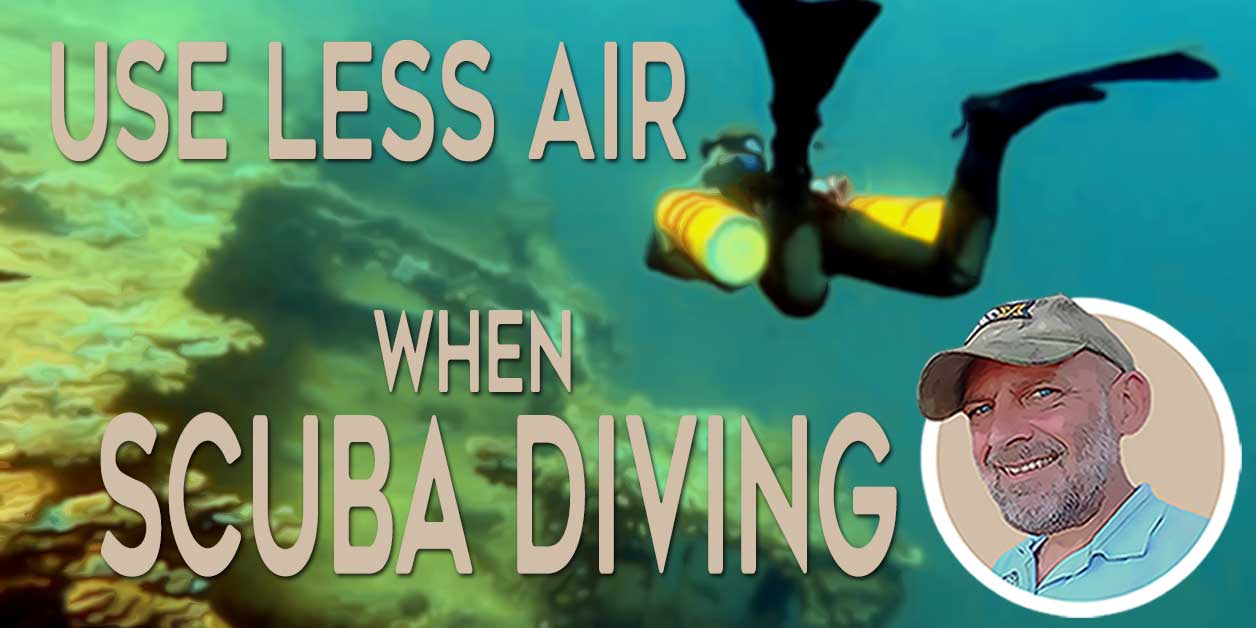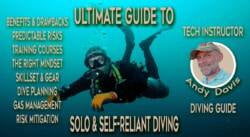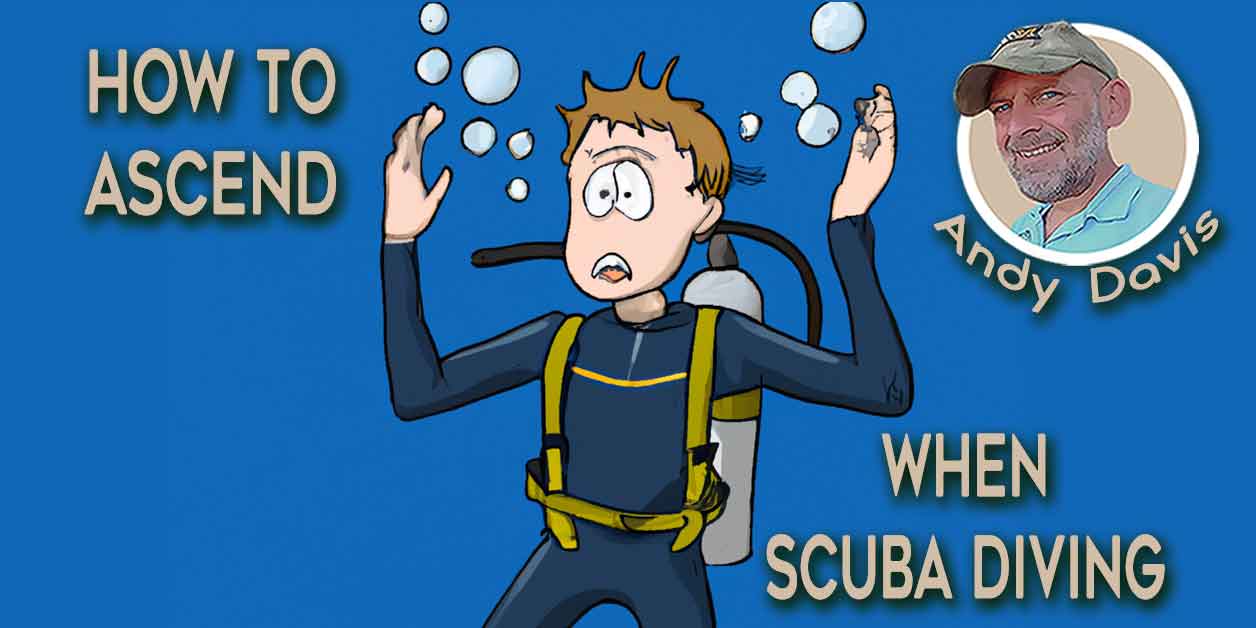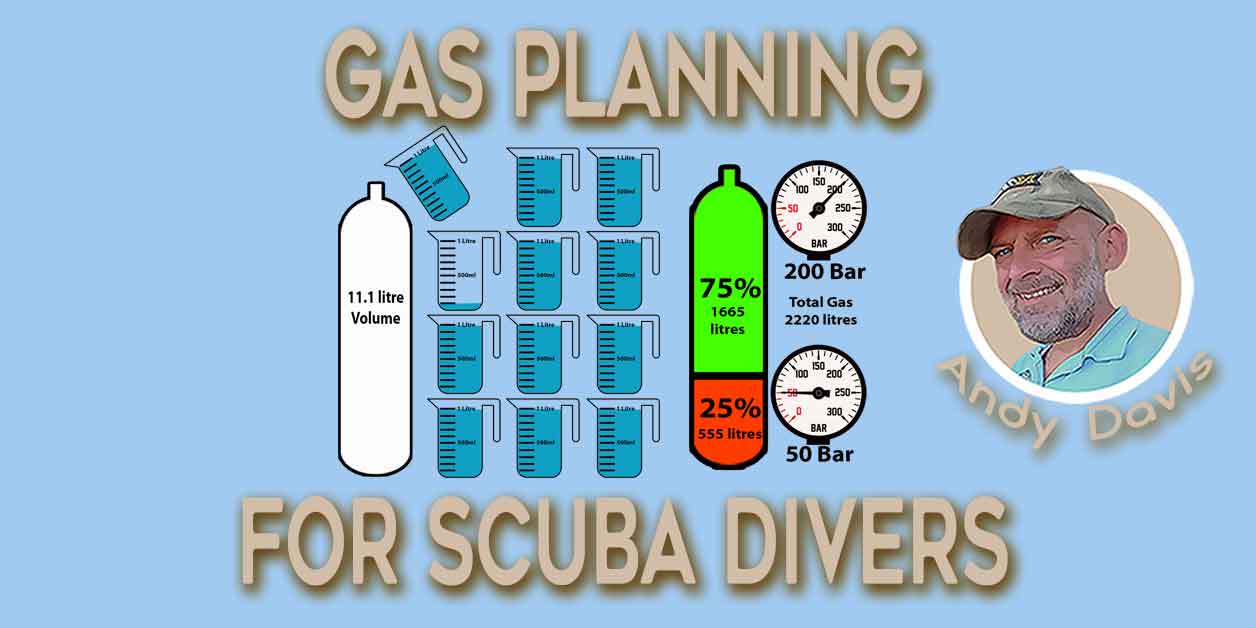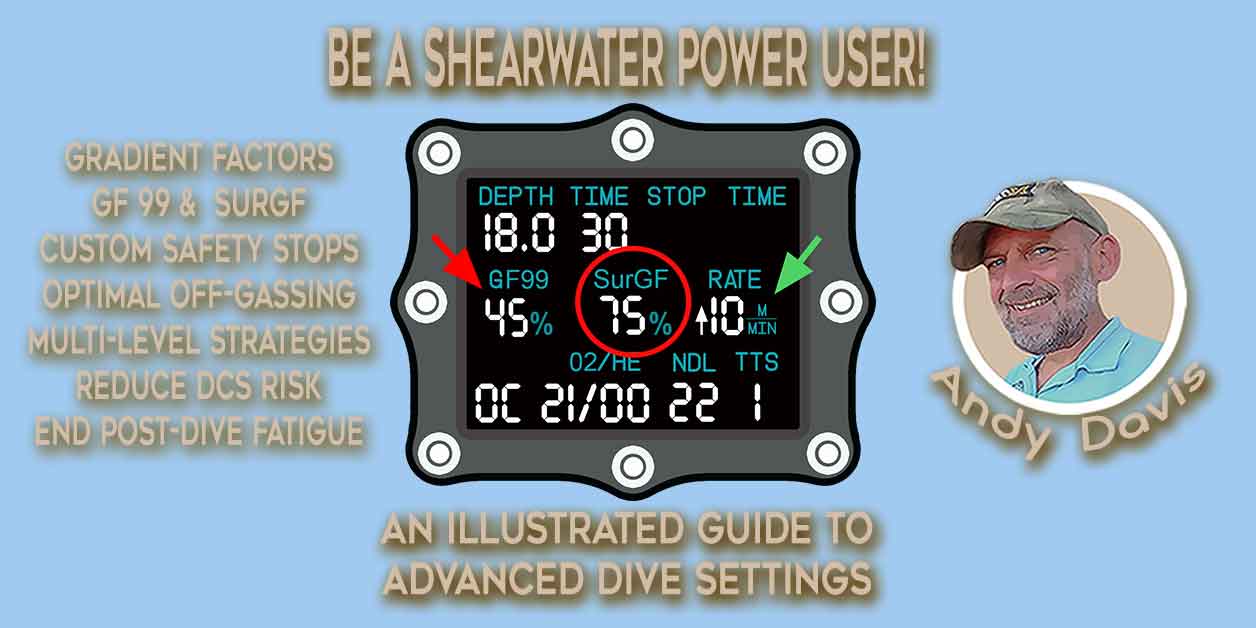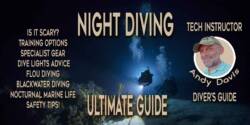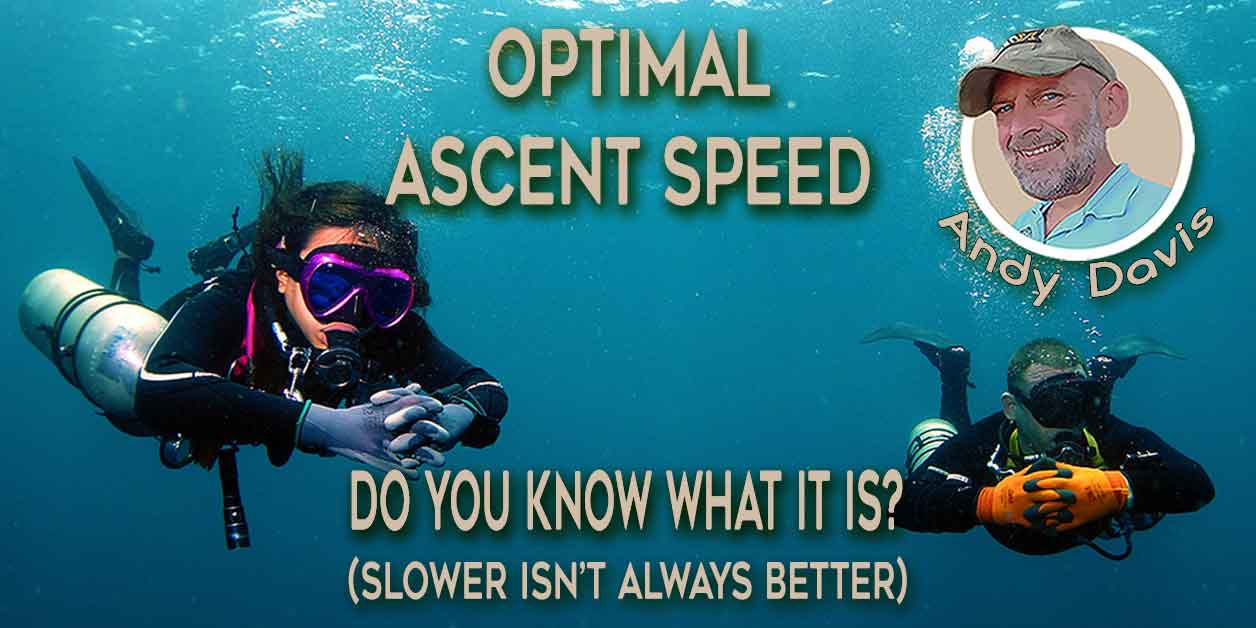Altitude Diving Adventures: All You Need to Know
Altitude diving opens up a whole new world of dive sites to explore, even when you’re far from the coast. Dive sites at altitude are often overlooked, meaning you can visit waters few others ever experience.
What is Altitude Diving?
Altitude diving is any diving conducted 300 to 3,000 meters (1,000 to 10,000 feet) above sea level.
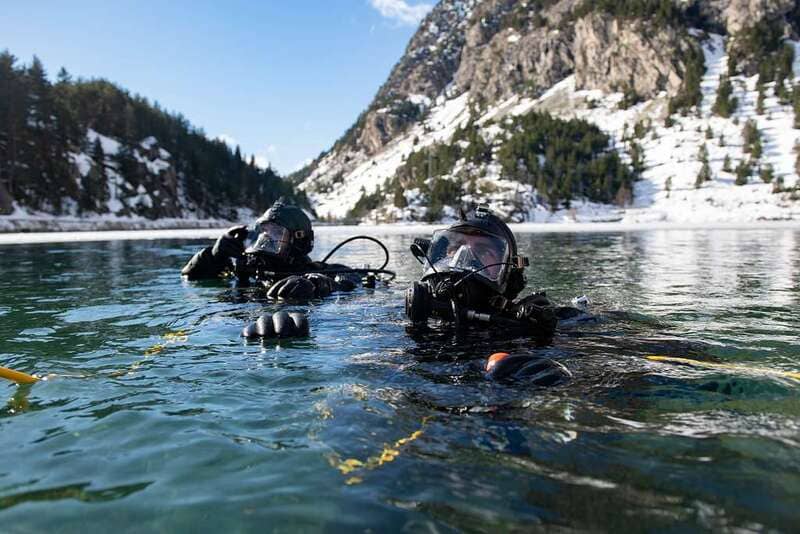
Why is Altitude Diving Different From Normal Diving?
- The atmospheric pressure at altitude is lower than at sea level.
- This means that the pressure decrease as we ascend to the surface is greater at altitude.
- Decompression sickness is therefore more likely to occur, and this is why we treat altitude dives differently to regular dives.
Altitude Diving History and Facts
Altitude diving has a fascinating history and notable records:
- Jacques Cousteau’s Pioneering Dive (1968): Renowned diver Jacques Cousteau is credited with the first extreme altitude diving record. In 1968, he led an expedition to Bolivia and Peru’s Lake Titicaca, where he explored submerged Inca treasures at an astonishing altitude of 12,507 feet (3812 meters).
- Lago Licanbur Volcano Expedition (1982): In 1982, a team led by Charles Brush and Johan Reinhard achieved a new altitude diving record at the Lago Licanbur volcano in Chile, reaching an impressive height of 19,400 feet (5900 meters).
- SETI Institute/NASA Ames Expedition (2006): Another record was set at the same location in 2006 by a team led by Nathalie Cabrol from the SETI Institute and NASA Ames.
- Pili Volcano Dive (Highest Recorded, Date Unspecified): As of the date of this publication, the highest recorded dive occurred at the Pili Volcano in Chile, where Philippe Reuter, Claudia Henriquez, and Alain Meyes descended to a remarkable depth of 20,000 feet (6000 meters).
- Highest Scuba Dive in the Continental United States (2013): Altitude diving isn’t limited to remote locations. In September 2013, John Bali accomplished the highest scuba dive in the continental United States at Pacific Tarn Lake in Colorado, reaching an altitude of 13,420 feet (4090 meters).
Understanding the Basics of Altitude Diving
The cornerstone of scuba diving is understanding the relationship between pressure and volume. This relationship dictates the science behind dive planning and provides guidelines for flying after diving and altitude-diving procedures.
Altitude Diving Considerations
When diving in inland lakes and rivers at altitudes above sea level, several factors need consideration:
- Dive tables and computer algorithms are typically based on sea-level conditions (1 atmosphere) and seawater properties, so adjustments are necessary for altitude dives.
- A dive at 2,000 feet above sea level results in a surface pressure of 0.93 atmospheres (atm), affecting gas absorption and dive planning.
- Standard dive tables are usually designed for altitudes at or below 1,000 feet above sea level, requiring the use of specialized tables or adjustments for altitude diving.
- Ascending from a lower to a higher altitude dive may require treating the first dive as repetitive, especially when using dive computers, which should be manually adjusted for altitude and water type (freshwater or saltwater).
- Dive planning devices rely on mathematical calculations and theory; it’s essential to plan conservatively, stay within device limits, and include a safety stop.
- Regardless of one’s acclimation to altitude, divers should adhere to planning device rules, whether diving in freshwater or at altitude.
- Dive table or computer instruction guides provide valuable insights into device limits and safety precautions for a more enjoyable and secure diving experience.
A Brief Summary of Altitude Diving Theory
Diving at altitude or flying after diving significantly affects nitrogen exposure and pressure-gradient calculations used in standard dive tables and computer models.
The lower atmospheric pressure in high-altitude regions creates a greater relative difference and pressure gradient between the atmospheric pressure and underwater pressure.
As a result, the impact of scuba diving at a given depth is more substantial compared to a sea-level dive, leading to shorter no-decompression/no-stop times for altitude dives.
To address these challenges, divers have several options:
Altitude Tables and Dive Computers:
- Divers can utilize simple altitude tables that provide ambient pressure values at different elevations for planning altitude dives.
- Many modern dive computers offer the functionality to adjust and recalibrate based on varying ambient pressures, making them suitable for altitude diving.
- Altitude-diver specialty training courses are available to educate divers on the correct procedures and essential planning considerations for altitude dives.
Additionally, it’s crucial to take precautions when transitioning from sea-level diving to higher altitudes, such as driving over mountain ranges after a sea-level dive.
Failure to observe safety measures can create an increased pressure gradient between the nitrogen in a diver’s tissues and the surrounding environment. This forces the body to expel nitrogen more rapidly, potentially triggering decompression sickness.
To mitigate this risk, divers should observe extended surface intervals before embarking on journeys to higher altitudes after sea-level dives.
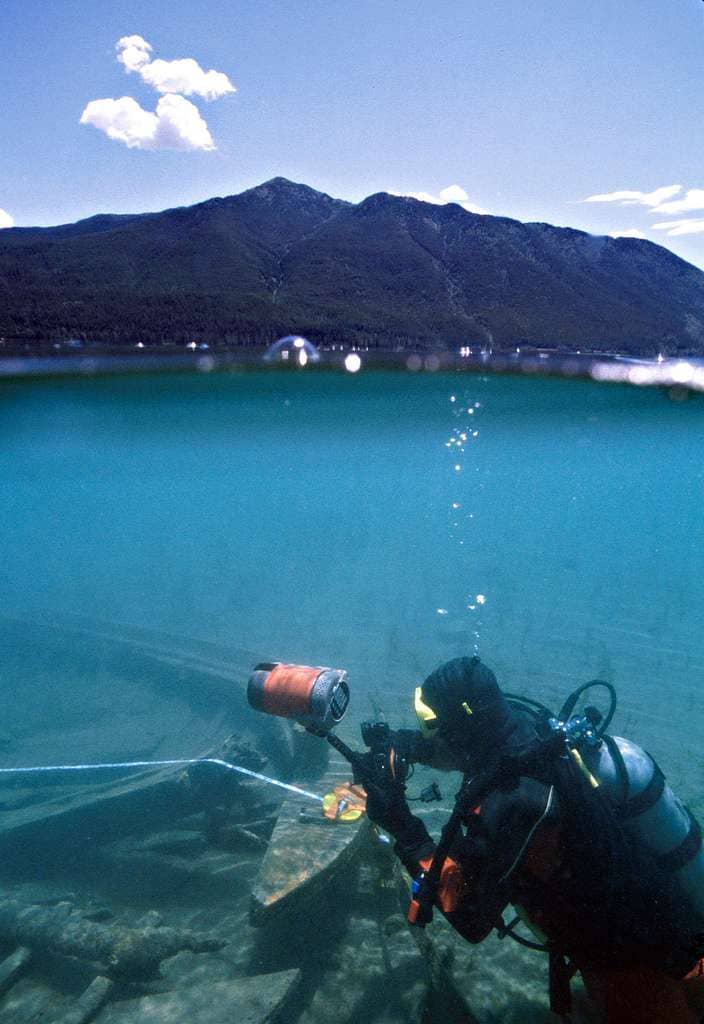
Altitude Diving versus Flying After Diving
The same principle applies to flying after diving, as aircraft cabins are pressurized to an equivalent of about 7,800 feet or 2,400 meters in altitude.
Flying immediately after diving creates a significant pressure gradient between the absorbed gas in the body and the surrounding pressure, potentially leading to the formation of bubbles and decompression sickness.
According to the PADI/DSAT RDP table, if you’re flying after a single no-decompression dive, wait a minimum of 12 hours. For repetitive and/or multi-day diving, leave a minimum pre-flight surface interval of 18 hours. SSI recommends that you always wait at least 24 hours after diving before flying to avoid decompression problems.
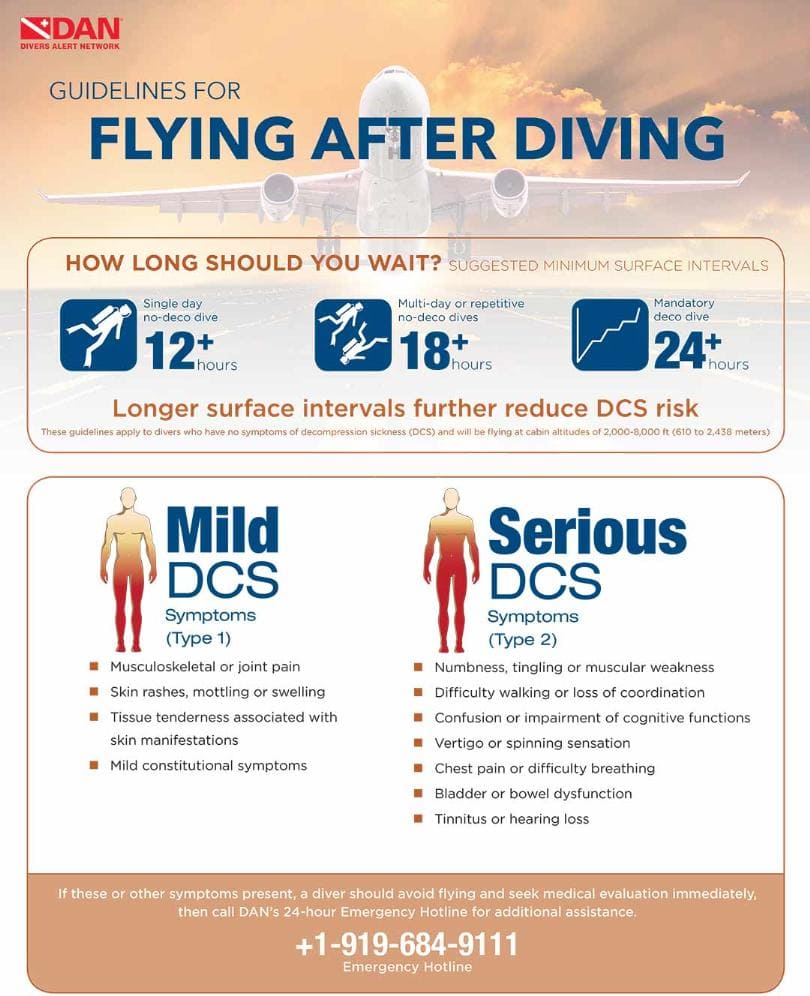
Altitude Diving, Depth Gauges and Computers
When engaging in altitude diving, it’s crucial to comprehend how your depth gauge behaves in freshwater at high elevations. Various depth gauges, both mechanical and electronic, may require adjustments to provide accurate depth readings.
- Mechanical Depth Gauges:
- Mechanical depth gauges with bourdon tube mechanisms tend to display shallower depths than the actual depth when used in freshwater at altitude.
- Those equipped with capillary tube mechanisms tend to read deeper than the true depth.
- Some mechanical gauges offer recalibration options, allowing you to correct depth readings for freshwater conditions.
- Electronic Depth Gauges:
- Certain electronic depth gauges are calibrated exclusively for measuring depth in feet or meters of seawater.
- When diving in freshwater at altitude, it’s advisable to rely on older altitude tables, as these gauges may not accurately account for the change in medium.
- Dive Computers:
- Most modern dive computers offer the flexibility to adjust depth readings for freshwater environments.
- Some advanced dive computers can even automatically switch to freshwater depth calculations when used at altitudes typically ranging from 1,000 to 2,000 feet above sea level.
- When using dive computers that accurately measure depth in freshwater, it’s recommended to employ the new altitude tables tailored to these devices for precise dive planning.
Dive Computers and Altitude Diving
Dive computers are critical tools for divers, employing decompression algorithms to reduce the risk of decompression illnesses. However, several key considerations and limitations exist when using these devices:
Automatic Depth and Water Type Adjustment:
- Most modern dive computers automatically adjust for starting altitude, ensuring accurate depth calculations.
- They can differentiate between freshwater and seawater conditions, adapting decompression calculations accordingly.
Manual Input Requirements:
- Some dive computers may require manual input for altitude and water type, necessitating diver attention to these settings.
- Ensuring accurate manual input is vital to prevent miscalculations.
Temperature Considerations:
- Many dive computers incorporate temperature into their calculations, factoring it into decompression risk assessments.
- Temperature fluctuations can impact decompression profiles and should be monitored.
Limitations in Accounting for Individual Factors:
- Dive computers cannot factor in individual risk factors such as age, body weight, habitus, the presence of a patent foramen ovale (PFO), alcohol consumption, or dehydration.
- Divers should be aware that these individual variables are not considered when relying on dive computer data.
Errors and Reliability at Altitude:
- It’s essential to note that many dive computers, when tested, have exhibited significant errors and unreliability when used at altitude.
- These errors can pose risks to divers, necessitating caution.
Manual Dive Profile Planning:
- Despite advanced dive computers, meticulous manual dive profile planning remains essential, particularly during altitude diving.
- Manual planning accounts for various factors, including altitude-related risks, and serves as a safety measure.
Divers should approach dive computer use with a comprehensive understanding of these considerations, ensuring their safety and the accuracy of their decompression calculations, especially in challenging conditions like altitude diving.
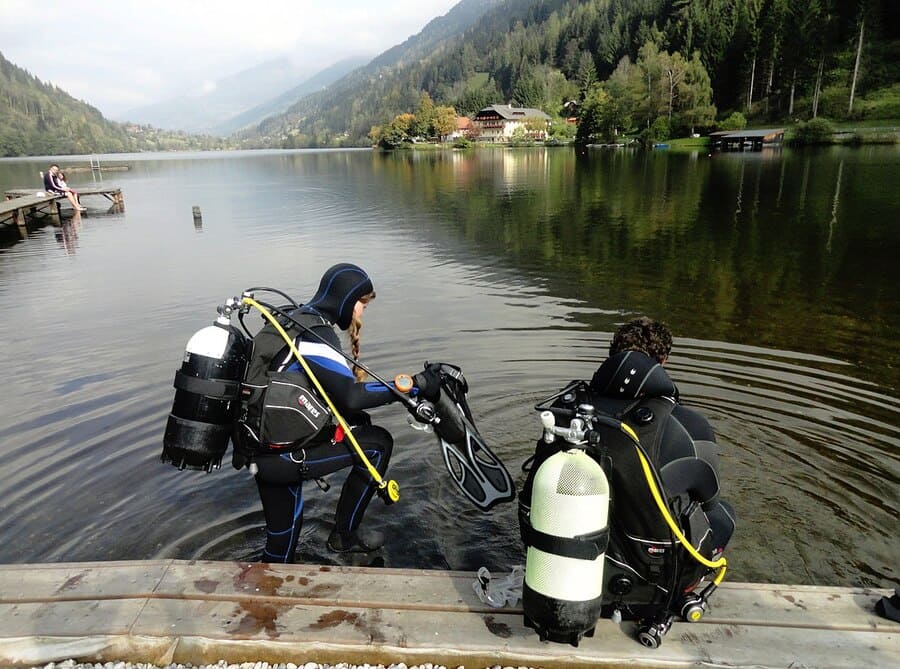
What Experience Do I Need for Altitude Diving?
Specialist training is required for altitude diving. Lots of this will focus on avoiding decompression sickness.
There are several agencies out there that provide altitude diving courses. Most don’t require vast diving experience. For instance, the PADI and SSI Altitude Diver courses are available to Open Water Divers over 10 years old.
Topics you’ll study include:
- Planning dives at altitude. The lower atmospheric pressure at altitude makes planning dives at altitude different from dives at sea level.
- Using your dive computer. Some dive computers have altitude sensors, but most don’t. This means you’ll have to adjust the settings to account for the high altitude yourself.
- Managing emergency scenarios. As for all specialized diving, altitude diving presents some additional hazards that you should be aware of.
Diving at altitude often means spending time in mountainous environments. This makes for spectacular scenery, but it also means you’ll be exposed to the cold. It’s a good idea to add some drysuit dives to your log book before you go altitude diving in some locations!
Finally, some mountains have vast underwater cave networks to explore. But altitude dive training isn’t enough for this – you’ll also need specialized cave diving experience to be safe in these environments.
Is Altitude Diving Dangerous?
Diving at altitude comes with an increased risk of decompression sickness, which is why specialist training is required. But, if you remember your training, it can be perfectly safe.
1. Pressure Changes:
- Divers in mountain areas often encounter significant pressure changes, especially when traversing mountain passes.
- These changes can induce off-gassing of residual nitrogen in the bloodstream, increasing the risk of decompression sickness.
- To mitigate this risk, divers should follow a standard warning: “do not fly for 18 hours following a single dive, or 24 hours after the last dive of a multi-dive profile.”
- Allowing time for off-gassing after arriving at an altitude from a dive is crucial.
- Acclimatization to new altitude levels is recommended, with a minimum of 12 hours before diving, and a 3-day acclimatization may be necessary at elevations exceeding 10,000 feet (3000 meters).
- When diving before the recommended wait time ends, divers should consider residual nitrogen and add appropriate time to bottom times when calculating decompression obligations.
2. High-Altitude Weather:
- High-altitude weather can significantly affect diving risk.
- Temperature extremes and reduced oxygen concentrations are common at higher altitudes.
- Cold, dry, and humidified air may lead to respiratory issues, ranging from minor coughs to asthmatic wheezing.
- Combined with reduced oxygen availability, this can result in increasing hypoxia.
- Respiratory rates initially increase to remove excess carbon monoxide (CO) due to lower PaO2 levels.
- This process can also lead to insensible fluid losses and dehydration.
- Divers may unintentionally deplete air in their tanks.
3. Health Risks at Higher Altitudes:
- Altitudes greater than 8000 to 10,000 feet may expose individuals to cold injuries, acute mountain sickness (AMS), high-altitude pulmonary edema (HAPE), or high-altitude cerebral edema (HACE).
4. Depth Calculations:
- Dive profiles for mountain waterways are typically designed for freshwater.
- The increased density of seawater exerts greater pressure compared to freshwater.
- Divers must convert depth calculations from feet of seawater (fsw) to feet in freshwater (ffw) or use specialized equipment like freshwater charts or dive computers that allow for this conversion.
However, there are some additional risks associated with spending time in high-altitude or very cold environments. These include:
Altitude Sickness
- This occurs when you travel to a high altitude too quickly.
- Symptoms can include a headache, dizziness, and shortness of breath.
- This typically doesn’t occur at altitudes lower than 2,400 meters (8,000 feet).
- However, it’s always a good idea to give your body some time to acclimatize before diving.
Hypothermia
- This occurs when your body temperature drops to dangerous levels (below 35°C/95°F). It typically occurs when you’re exposed to cold temperatures for too long.
- Even the best drysuit can leak sometimes, or your vehicle may break down, causing you to spend half a day on a mountainside after a frosty dive.
- A thermos of hot water and a foil blanket can make all the difference at times like these, so always take them with you.
General First Aid
As scuba divers, most of us are already aware of the dangers of carrying out physical activities in remote areas. Altitude diving is no different.
If you think you’ll be spending lots of time up a remote mountainside, then why not take a course and brush up on your first aid skills?
Taking First Aid and Rescue Diver courses before your altitude training could also be beneficial.
What Equipment Do I Need for Altitude Diving?
The exact gear you’ll need will depend on the environment you’re diving in, but we’ve listed a few key items here.
Exposure Suits and Accessories
Most altitude dives require a drysuit to keep you warm. They aren’t cheap, but with proper care, they can last a lifetime.
However, in warmer locations, you can use a semi-dry wetsuit instead. If you do, you’ll probably want a cozy pair of gloves and dive boots to go with it. And don’t forget a hood if the suit doesn’t come with one attached.
If you’re not sure whether to dive in a drysuit or a semi-dry suit, try asking local divers what they use.
Knife or Cutting Tool
When diving in freshwater environments, you’ll encounter some incredible plant species. This is part of what makes freshwater diving so great, but it poses hazards too.
You can become entangled in plants that grow long and tall, similar to kelp forests. So, it’s a good idea to take a knife or cutting tool with you when altitude diving.
If you’re buying new gear, why not get used to it in a familiar diving environment first? For some people, this might be in a protected, shallow bay area, or a local quarry. For others, it might be at a local training pool.
Where are the Best Altitude Diving Locations?
Altitude diving can be a spectacular experience, but some locations are extra-special. Here are some of the best places to altitude dive:
Yellowstone National Park, United States
Yellowstone National Park in the U.S. is one of the world’s most famous national parks. Much like the volcanic features above the water, there are many fissures and geothermal hotspots underwater, in the lakes of Wyoming’s most famous attraction.
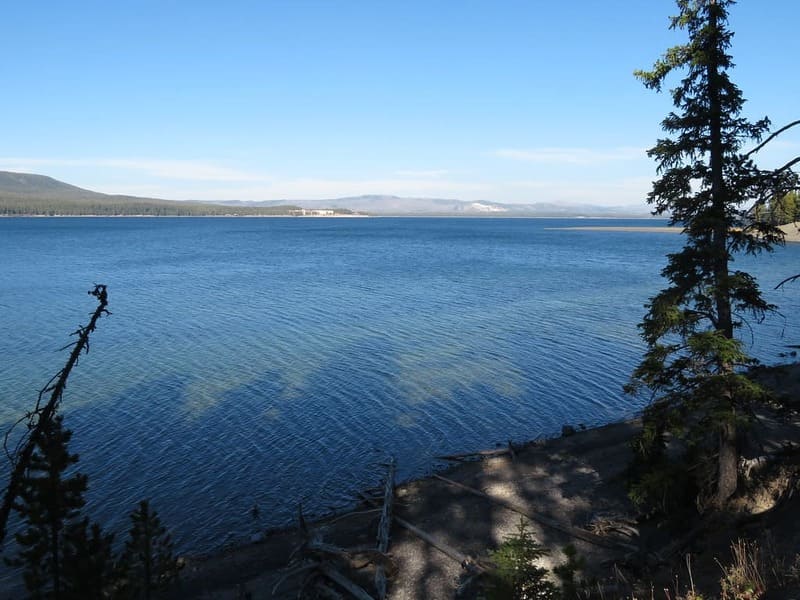
Diving at 7,600 feet (2,500 m), there are a few small wrecks to see. But the most surreal experience is diving at West Thumb Geyser Basin, where divers hover close to underwater geysers and bizarre, lava-like vertical spires. At Mary Bay, huge volumes of pressurized hot water escape underwater vents, giving the sensation of swimming through champagne bubbles.
It’s best to dive at Yellowstone between July and August. During this time, visibility can reach 30 feet (10 m), and water temperatures peak at 50 degrees F (10 C).
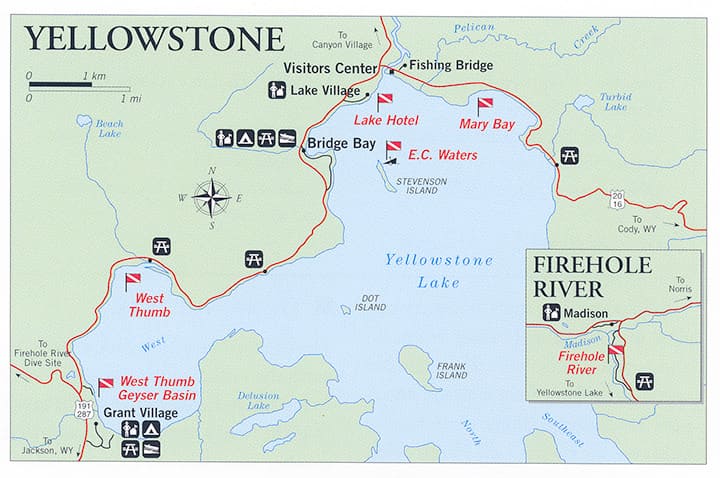
At 390 feet (120 m) deep and 125 square miles, Yellowstone Lake has a vast area to explore. Be warned, however, that geothermic activity at sites like West Thumb Geyser Basin means that temperatures can range from bitterly cold to scalding hot within just a few inches, so keep your distance from underwater vents.
What’s more, there are plenty of underwater fissures, hot water vents, and even wrecks for you to explore. Yellowstone Lake is particularly popular and is located a whopping 2,372m (7,783 feet) above sea level.
Lake Tahoe, United States
Lake Tahoe, which straddles the border of California and Nevada, is renowned for stunning topside scenery. But the scuba diving in Lake Tahoe is lovely as well. There are several well-known dive shops in the Tahoe area, which you can reach by driving from international airports in Las Vegas and San Francisco.
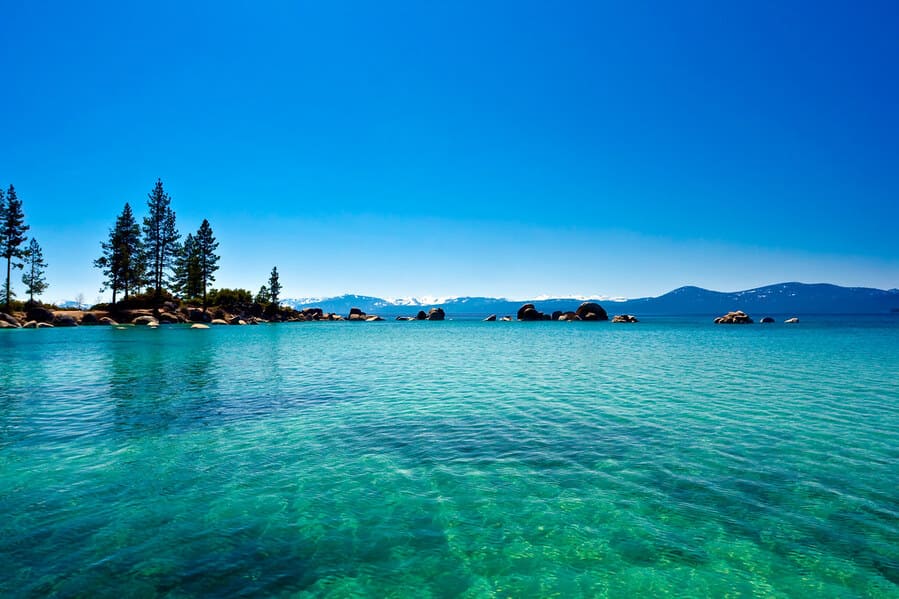
The iconic Lake Tahoe nestles in the heart of the Sierra Nevada mountains between California and Nevada. And while this freshwater lake is perennially renowned for its idyllic topside scenery, watersports, and camping, scuba diving in Lake Tahoe rarely gets the attention it deserves.
At 1,645 feet (501 m), Tahoe is the second deepest lake in the U.S., trailing only Crater Lake in Oregon. The depth, combined with the size of the high-altitude lake, offers mouthwatering possibilities for avid divers who’d like to explore wrecks, landscapes, and freshwater species in a lake with crystal clarity. Here are a few of our favorite sites.
Lake Titicaca, Peru/Bolivia
Lake Titicaca straddles the border of Peru and Bolivia at 12,000 feet (3,810 m). The high Andes border this spectacular lake on the north side. Exploring beneath the surface of this, the world’s highest navigable lake, can yield pre-Incan treasures.
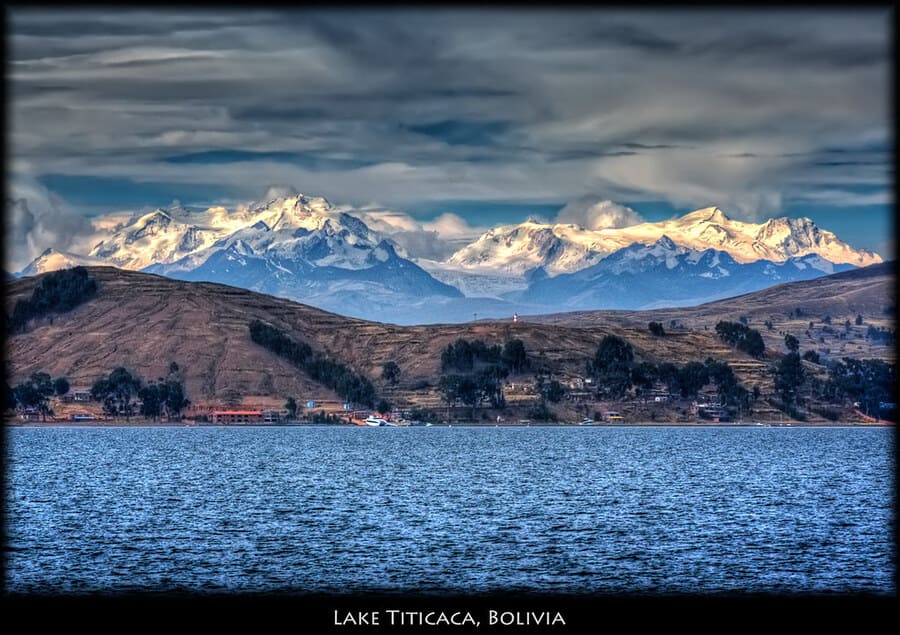
Divers have found ruins of an ancient temple measuring 660 feet by 160 feet (200 m by 50 m), as well as a terrace, road, and wall. Lake Titicaca is also home to endemic fish and crustacean species, the latter constituting 90 percent of the lake’s total 530 aquatic species.
With temperatures fluctuating between 50 and 57 F (10 to 14 C), Lake Titicaca diving can be chilly. Nevertheless, with visibility of up to 50 feet (15 m) during winter, it is best to dive in the colder season. The lake has a maximum depth of 922 feet (281 m), and most recreational divers do not descend past 100 feet (30 m).
Mountain Lakes, Austria
Unfortunately, the world-famous Grüner See in Austria has been closed to divers since January 2016. But there are plenty of superb diving alternatives in the picturesque Austrian mountains.
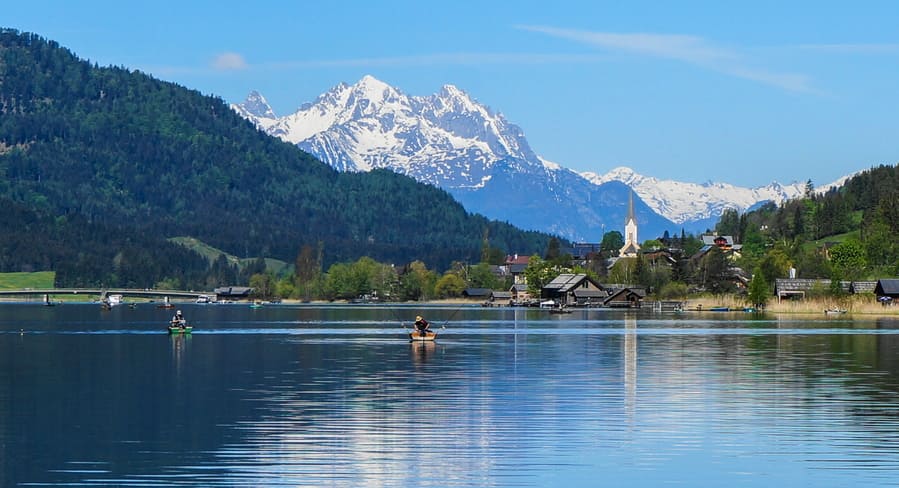
Apart from spectacular scenery reminiscent of the Norwegian fjords, Weissensee Lake is famous among both local divers and foreigners for its gin-clear waters and its resident fish, such as pike and catfish, which grow to enormous sizes. In winter, the lake freezes over, becoming Europe’s largest natural ice surface, and a fantastic place to try or practice ice diving.
In the 2.5-square-mile lake (6.5 square km), divers can expect visibility up to 70 feet (20 m). The lake reaches a depth of 318 feet (97 m), and in the summer months, water temperatures can reach 75 F (24 C).
Lake Atitlán, Guatemala
The deepest lake in Central America (335m or 1,100 feet deep) is definitely one to add to your altitude diving bucket list.
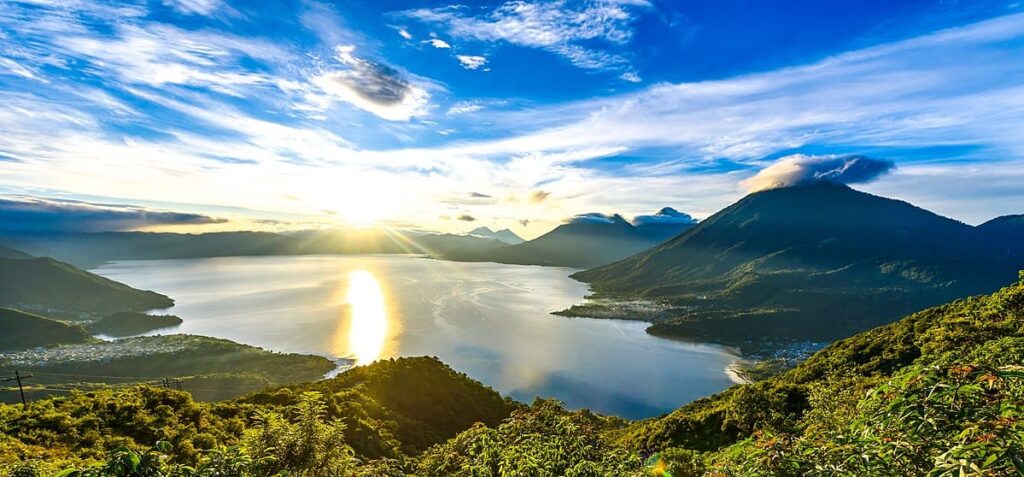
The lake sits at 1,562m (5,125 feet) altitude and offers an array of dive sites to explore, from plummeting walls to cavernous swim-throughs.
Plus, there aren’t many dives where you can surface between three active volcanoes!
Walchensee, Germany
You can find this vast alpine lake 800m (2,600 feet) above sea level. It’s one of the most enchanting lakes in Germany, and its glassy waters host a range of underwater species.
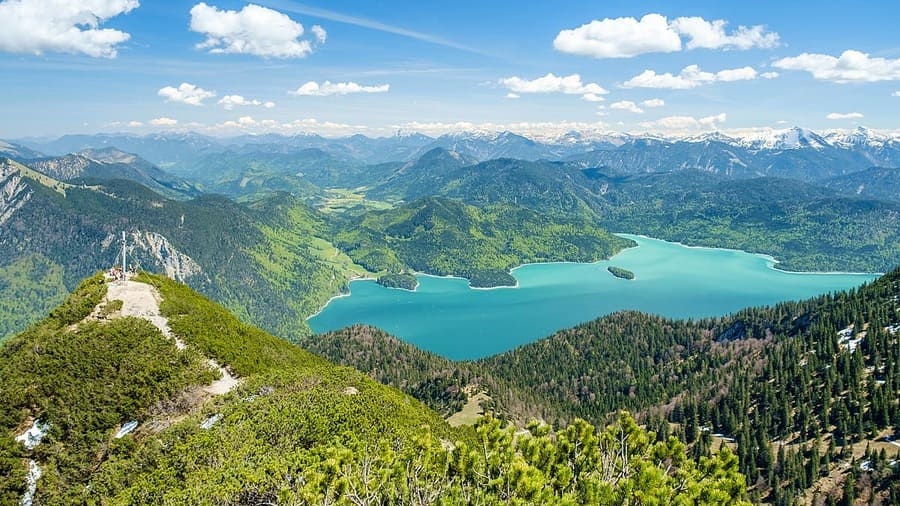
Caumasee, Switzerland
Rather than being filled by a river or the falling of rain, this quirky lake is fed via underground sources. It’s located approximately 1,000m (3,200 feet) above sea level and is surrounded by beautiful alpine forest.
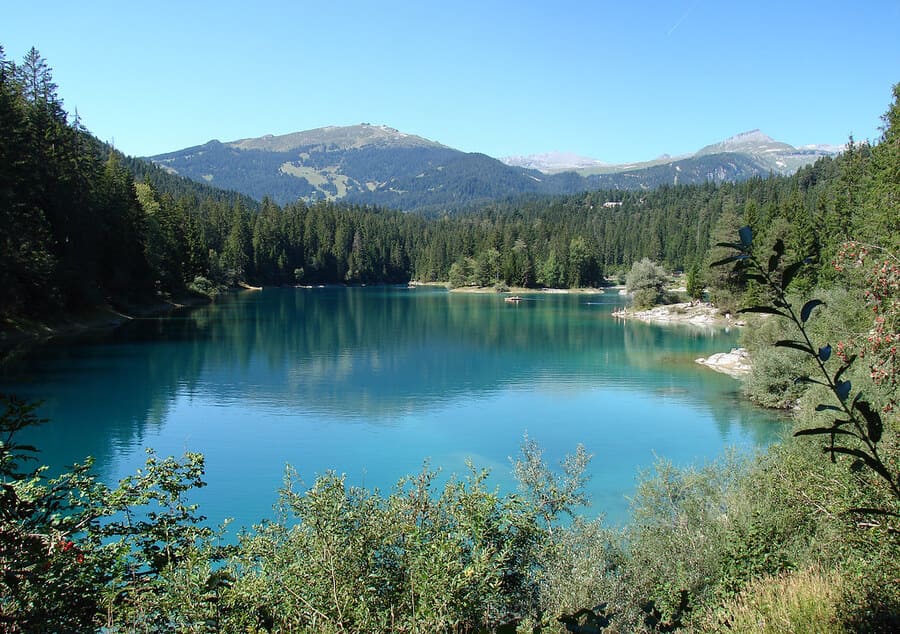
Put Altitude Diving On Your Bucketlist
In conclusion, embarking on altitude diving adventures can be an exhilarating and rewarding experience for divers seeking to explore the hidden treasures of high-altitude water bodies. However, as we’ve explored in this comprehensive guide, altitude diving comes with its unique set of challenges and considerations.
From the historical records set by brave explorers to the intricacies of dive computer algorithms, we’ve delved into the fascinating world of altitude diving. We’ve learned that careful planning, acclimatization, and a thorough understanding of how altitude affects diving are essential for a safe and enjoyable adventure.
While the allure of high-altitude diving can be irresistible, it’s crucial to remember that safety should always be the top priority. By adhering to recommended guidelines, utilizing appropriate equipment, and staying informed about local conditions, divers can mitigate risks and make the most of their altitude diving experiences.
So, whether you’re dreaming of exploring the depths of mountain lakes, volcanic craters, or remote alpine waters, this guide equips you with the knowledge needed to embark on your altitude diving adventures confidently. With preparation and a sense of adventure, you can dive into these unique underwater worlds and create memories that will last a lifetime.
About The Author

Andy Davis is a RAID, PADI TecRec, ANDI, BSAC, and SSI-qualified independent technical diving instructor who specializes in teaching sidemount, trimix, and advanced wreck diving courses.
Currently residing in Subic Bay, Philippines; he has amassed more than 10,000 open-circuit and CCR dives over three decades of challenging diving across the globe.
Andy has published numerous diving magazine articles and designed advanced certification courses for several dive training agencies, He regularly tests and reviews new dive gear for scuba equipment manufacturers. Andy is currently writing a series of advanced diving books and creating a range of tech diving clothing and accessories.
Prior to becoming a professional technical diving educator in 2006, Andy was a commissioned officer in the Royal Air Force and has served in Iraq, Afghanistan, Belize, and Cyprus.
In 2023, Andy was named in the “Who’s Who of Sidemount” list by GUE InDepth Magazine.
Purchase my exclusive diving ebooks!
Altitude Diving FAQs
According to both PADI and SSI, special procedures apply for diving at an altitude of greater than 1,000 feet (300 m).
Altitude diving is scuba diving conducted at locations situated between 300 to 10,000 feet (91 to 3,048 meters) above sea level, where lower atmospheric pressure affects dive planning.
Rules for diving at altitude include adjusting dive tables, calculating shorter no-decompression times, and considering specialized training for safe high-altitude diving.
Some of the best places for altitude diving include Yellowstone National Park in the USA, Lake Atitlán in Guatemala, Lake Titicaca in Peru/Bolivia, and various mountain lakes in Austria and Germany.
Altitude diving typically starts at locations situated above 300m (10,000 feet) above sea level, where lower atmospheric pressure impacts dive planning and safety.
Altitude affects diving by altering the atmospheric pressure, which in turn impacts the absorption and release of nitrogen in the body, leading to shorter no-decompression times and the need for specialized procedures and training.
Originally posted 2023-09-19 15:40:49.








